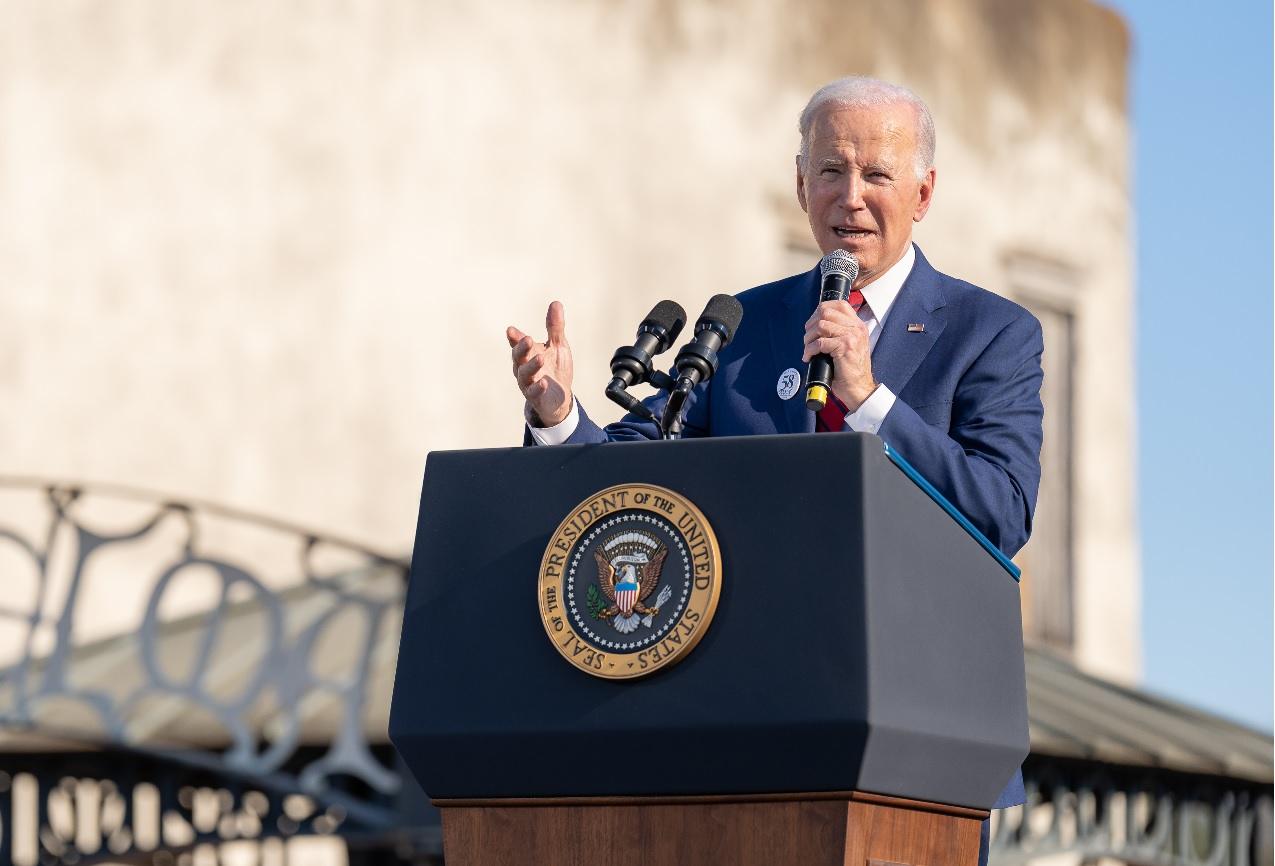Biden Unveils Strict Vehicle Emissions Standards to Drive Clean Transportation Transition
The Biden administration on Wednesday unveiled a series of strict vehicle emissions standards anticipated to reduce greenhouse gas emissions (GHG) from the transport sector by billions of tons over the coming decades, and to accelerate the transition to electric vehicles.
The new proposals, announced by the U.S. Environmental Protection Agency (EPA) include more stringent greenhouse gas emissions standards for both light- and medium-duty vehicles for the 2027 – 2032 model years, with stringency increasing in each year to reach a 56% reduction in light-duty fleet-wide GHG emissions in 2032, compared to current 2026 standards, and a 44% reduction for medium-duty vehicles, as well as a separate set of heavy-duty truck emissions standards. Overall, the EPA estimates that the rules will result in a reduction of nearly 10 billion tons of CO2 emissions through 2055.
Addressing the transport sector’s emissions impact has been a key focus of the Biden administration’s climate-focused action, as it looks to achieve its ambition to reduce economy-wide GHG emission by 50-52% in 2030, and to align with its Paris Agreement commitments. The transportation sector represents over 27% of U.S. GHG emissions, making it the largest source of emissions, with more than half (57%) of these contributed by light-duty vehicles.
Initiatives by the administration to advance clean mobility include an executive order signed in 2021 mandating that zero emissions vehicles make up half of new vehicle sales in the U.S. by 2030. The administration’s Bipartisan Infrastructure Law (BIL) allocates $7.5 billion for the development of a network of electric vehicle chargers, over $7 billion to invest in EV battery components, critical minerals, and materials, and $65 billion to upgrade power infrastructure to help ensure vehicles are powered by clean energy, while the Inflation Reduction Act (IRA) includes purchase incentives of up to $7,500 for new clean vehicles.
EPA Administrator Michael S. Regan, said:
“By proposing the most ambitious pollution standards ever for cars and trucks, we are delivering on the Biden-Harris Administration’s promise to protect people and the planet, securing critical reductions in dangerous air and climate pollution and ensuring significant economic benefits like lower fuel and maintenance costs for families.”
According to the EPA, the new proposals reflect advancements and investments in clean vehicle manufacturing over the past few years, with EV sales tripling, and the number of public EV chargers increasing by 40% since the beginning of the Biden administration, and more than $120 billion in private sector commitments towards domestic EV and battery investments since the signing of the IRA in 2022. The proposals also come as other jurisdictions introduce rules aimed accelerating the shift to EVs, such as the EU’s recent agreement to require a 100% reduction in CO2 emissions from new cars and vans registered in the EU from 2035.
In addition to the emissions reduction impact, the EPA estimated that the benefits of the proposed standards would exceed its costs by at least $1 trillion through 2055, including fuel and maintenance savings, as well as generating significant health benefits through reduced pollution.
Environmental sustainability groups welcomed the administration’s new proposals. Following the release of the proposed rules, Fred Krupp, President of Environmental Defense Fund, said:
“Today, America accelerated toward a clean transportation future and more jobs. The tailpipe pollution limits proposed today by the U.S. Environmental Protection Agency – both for new passenger cars and trucks, and for new urban delivery and freight trucks and buses – will give all Americans cleaner air and a safer climate, while also creating jobs and saving people money.”
Republican politicians and energy industry groups attacked the proposals, however, with Cathy McMorris Rodgers, Chair of the House Energy and Commerce Committee, arguing that the rules would “make it harder for people to afford new vehicles,” and the American Petroleum Institute’s (API) President and CEO Mike Sommers stating:
“This deeply flawed proposal is a major step toward a ban on the vehicles Americans rely on. As proposed, this rule will hurt consumers with higher costs and greater reliance on unstable foreign supply chains.”





